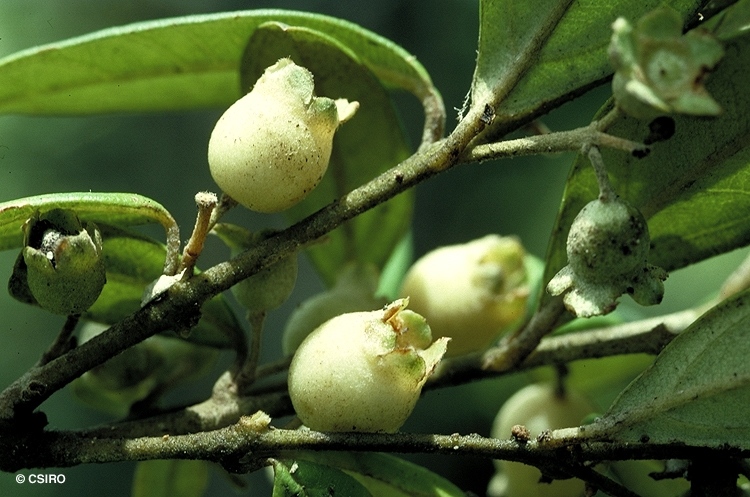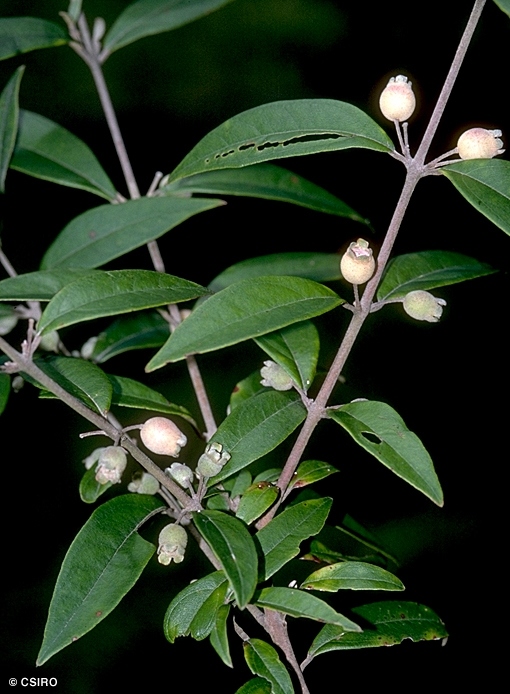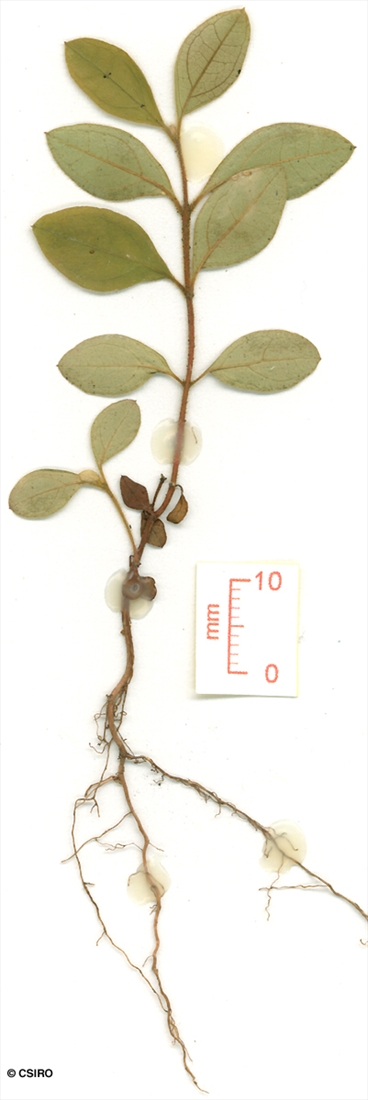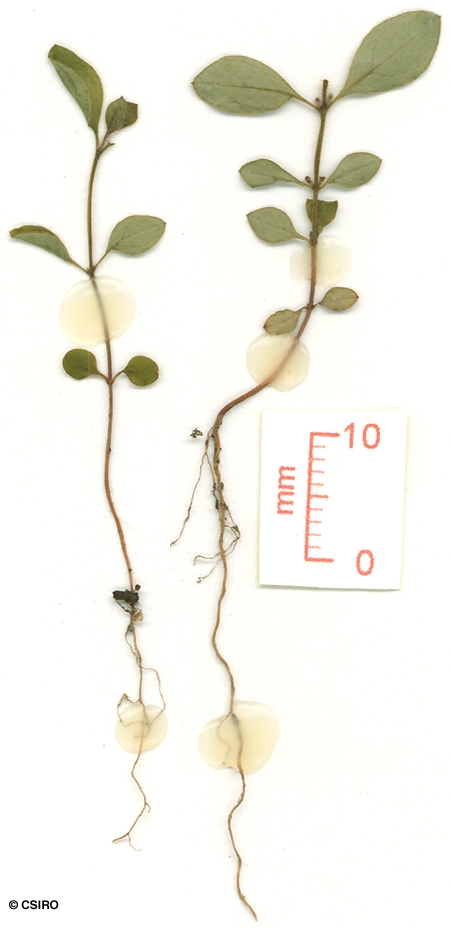Australian Tropical Rainforest Plants - Online edition
Rhodomyrtus canescens C.T.White & W.D.Francis





White, C.T. & Francis, W.D. (1920) Queensland Department of Agriculture and Stock. Botany Bulletin 22: 26. Type: Atherton, C.T. White, [given by A.J.Scott, Kew Bull. 33 (1978) 325 as Atherton, Jan. 1918, C.T. White s.n (BRI, holotype; K, isotype)].
Crater Ironwood; Ironwood, Crater
Usually flowers and fruits as a shrub about 1-4 m tall.
Leaf blades about 4.5-10 x 1.5-3 cm, underside densely clothed in fine, pale, somewhat matted hairs. Intramarginal vein conspicuous, about 2-3 mm from the blade margin. Petiole grooved or channelled on the upper surface.
Inflorescence shorter than the leaves. Flowers usually produced in groups of three (triads), each triad on a peduncle about 5-15 mm long. Calyx lobes about 2-2.6 mm long, pubescent on both surfaces. Petals about 8-10 x 6.5-7.5 mm, outer surface clothed in numerous short hairs just visible with a x10 lens. Ovary pubescent at the apex. Ovules about 14-16 per locule. Stigma capitate.
Infructescence not exceeding the leaves. Fruits +/- globular, about 6.5-11 x 4.5-7 mm., calyx lobes persistent at the apex. Seeds flattened, about 1.5-2 mm diam. Embryo U-shaped.
Cotyledons almost orbicular, about 2-4 x 2-3 mm, petiolate, apex mucronate. First pair of true leaves hairy on the upper surface but mainly glabrous below. At the tenth leaf stage: leaf blade +/- elliptic, apex acute or obtuse, base cuneate, both the upper and lower surfaces sparsely hairy; oil dots rather sparse, visible with a x10 lens. Terminal buds and young shoots densely clothed in pale prostrate hairs. Two lateral veins usually more prominent than the rest. Seed germination time 11 to 42 days.
Endemic to NEQ. Altitudinal range from 500-1200 m. Grows in disturbed areas particularly road edges and snig tracks in upland and mountain rain forest, also found in wet sclerophyll forest.





